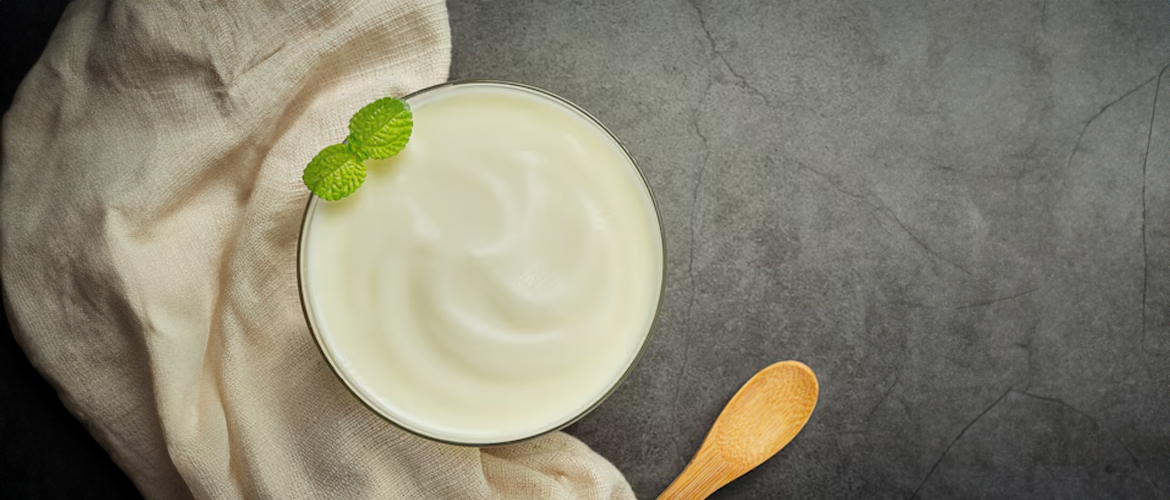Who doesn’t love mayonnaise? This creamy, tangy condiment has found its way into countless dishes around the world, from sandwiches and salads to dips and dressings. But did you know that making mayonnaise at home is easier than you might think? With just a few basic ingredients, you can whip up a batch of homemade mayo that tastes fresher, and richer, and can be customized to your taste. Plus, it’s preservative-free! Today, I’ll guide you through a homemade mayo recipe, share some fun flavor variations, and troubleshoot any bumps along the way.
What is Mayonnaise?
Mayonnaise is a creamy emulsion typically made from oil, egg yolks, vinegar or lemon juice, and seasonings. It’s loved for its smooth texture and slightly tangy flavor, making it a versatile condiment. While store-bought mayo is convenient, homemade mayonnaise has an unbeatable freshness and flavor that you’ll want to make over and over again.
Nutritional Facts of Mayonnaise
Before diving into this nutritional recipe, let’s talk about what you’re getting from mayonnaise nutritionally. Mayonnaise is primarily made from eggs and oil, making it rich in healthy fats and protein. While it’s calorie-dense, it’s also a good source of vitamins like E and K.
- Calories – 90 – 100: Mayonnaise is calorie-dense due to the oil content.
- Fat – 10g: Mostly unsaturated fats which are heart-healthy. You can use healthier oils like olive or avocado oil to create a better balance of fats.
- Cholesterol – 5-10mg: Since mayonnaise contains egg yolks, it also provides a small amount of cholesterol.
- Vitamins – Homemade mayo can contain small amounts of Vitamin E (from the oil) and Vitamin K (from the egg yolks).
Remember, like any indulgent condiment, mayonnaise is best enjoyed in moderation. But when made at home, you can control the ingredients and adjust them to fit your dietary preferences! Now, let’s move on to the fun part—making it!
Ingredients for Homemade Mayo Recipe
The beauty of homemade mayonnaise is that it requires just a few ingredients, most of which you probably already have in your pantry:
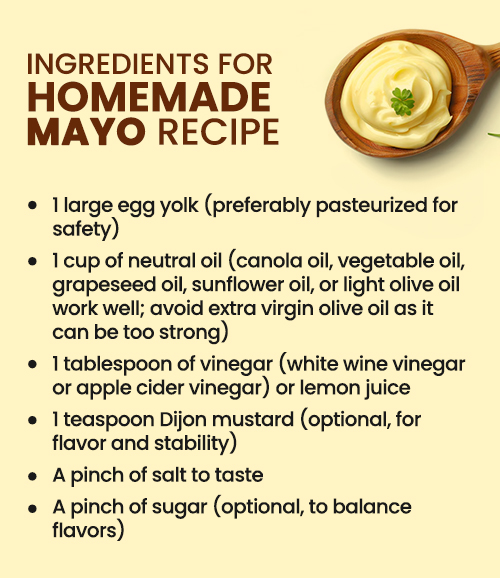
Directions: How to Make Homemade Mayonnaise
1. Prepare the Ingredients
Make sure your egg yolk is at room temperature. This helps it emulsify better with the oil. Also, have your oil ready in a measuring cup with a spout so you can add it gradually.
2. Whisk the Egg Yolks and Mustard
In a clean bowl, whisk the egg yolk and Dijon mustard together until combined. This is your base for the emulsion.
3. Slowly Add the Oil
This is the most critical step. The key to perfect mayonnaise is to add the oil very slowly. Begin by adding the oil drop by drop while whisking constantly. This helps the emulsion form, turning your egg yolk and oil mixture into a creamy base.
4. Keep Whisking
Keep whisking vigorously—this is where your arm workout comes in! If at any point the oil is added too quickly, the mixture can “break,” meaning the oil and egg won’t blend properly.
5. Add Vinegar or Lemon Juice
Once about half the oil is mixed in, add the vinegar or lemon juice. This adds tanginess and helps the emulsion stay smooth.
6. Finish with Oil
Continue whisking while slowly adding the remaining oil. By now, you should have a thick, creamy mayonnaise.
7. Season to Taste
Add salt to taste, and if you like a hint of sweetness, throw in a pinch of sugar. Adjust the acidity with more lemon juice or vinegar if needed.
Voila! Your Homemade Mayo is ready to enjoy!
How Long Does Mayo Last in Fridge?
Homemade mayonnaise doesn’t last as long as store-bought due to the lack of preservatives, but it can still be stored in the fridge for about one week. Here’s how to store it properly:
- Store your mayo in a clean, airtight container with a lid that works perfectly.
- Keep the mayonnaise in the fridge at all times. It will last about 3-5 days, but make sure to use it within a week for the best taste and texture. It’s a good idea to label the container with the date it was made.
- Store in the coldest part of the fridge: This helps prevent spoilage. Avoid keeping it in the fridge door where temperatures fluctuate more.
Different Mayo Flavors You Can Try
One of the best things about making mayonnaise at home is the ability to customize it to suit your taste buds. Here are some exciting flavor variations you can try:
1. Garlic Mayo (Aioli)
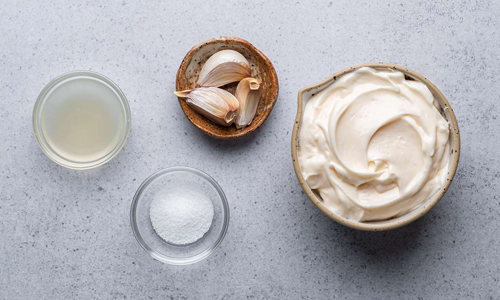
Crush a few garlic cloves and mix them into the mayo for a flavorful twist. It’s perfect for dipping fries or spreading on burgers.
2. Herb Mayo
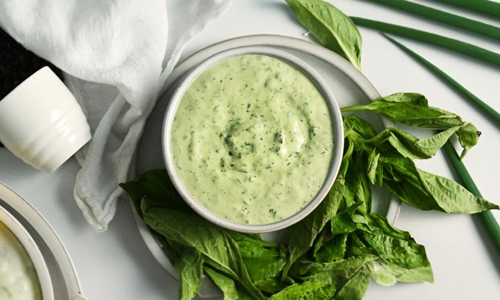
Blend in fresh herbs like dill, parsley, basil, or cilantro for a green and vibrant flavor. It works wonderfully with fish, salads, or grilled veggies and meats.
3. Spicy Mayo
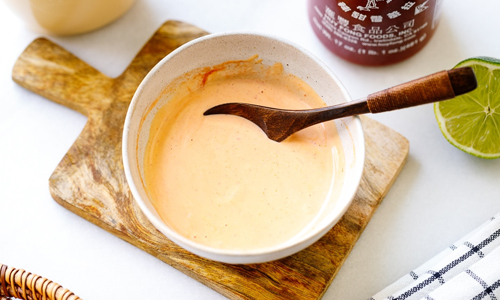
Add a tablespoon (or more if you love heat) of sriracha or your favorite hot sauce. This is great for sandwiches or as a dipping sauce for seafood.
4. Lemon Mayo
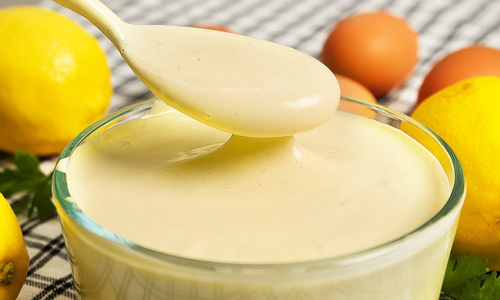
For a zesty, tangy mayo, add an extra tablespoon of lemon juice and some lemon zest. This bright, citrusy version is perfect with fish.
5. Truffle Mayo
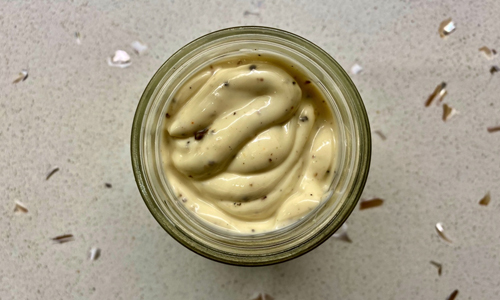
A dash of truffle oil mixed in makes for a luxurious, rich condiment that pairs beautifully with roasted meats or fries.
Expert Tips for Perfect Mayo Every Time

While making mayonnaise is pretty straightforward, here are a few expert tips to ensure it turns out perfect every time:
- Make sure your egg yolk and other ingredients are at room temperature before you start. Cold ingredients can prevent the mayo from emulsifying properly.
- Patience is key! Add the oil drop by drop at the start to create a stable emulsion.
- If whisking by hand sounds too tiring, you can use an immersion blender. It works like magic for quick and easy mayo!
- If you’re adding garlic, herbs, or other flavors, do so at the beginning of the process to allow them to fully incorporate.
- Use a neutral-tasting oil like canola or sunflower. While olive oil is healthy, its strong flavor can overpower the delicate taste of mayonnaise.
Troubleshooting Mayo: What to Do When it “Breaks”
Even the best cooks encounter a “broken” mayo—when the oil and egg mixture doesn’t emulsify properly and separates. But don’t worry! Here’s how to fix it:
- In a clean bowl, whisk together one egg yolk. Then, slowly add your broken mayo to the new yolk while whisking vigorously. The new yolk should help bind the mixture back together.
- Add a teaspoon of cold water and whisk. This can sometimes help the mayo come together again.
- If your mayo breaks, it’s usually because the oil was added too fast. Take your time, and be patient!
Conclusion
Making a homemade mayo recipe from scratch is a rewarding experience. It allows you to control the ingredients, experiment with flavors, and enjoy the fresh, creamy goodness that no store-bought jar can compete with. With just a few simple ingredients and a little bit of patience, you can whip up the perfect mayo for any dish. And don’t forget, even if it doesn’t go perfectly the first time, troubleshooting and practice will lead to a batch of mayo that’s delicious every time!
Linda
Related posts
Women Tips
Privacy Overview
| Cookie | Duration | Description |
|---|---|---|
| cookielawinfo-checkbox-analytics | 11 months | This cookie is set by GDPR Cookie Consent plugin. The cookie is used to store the user consent for the cookies in the category "Analytics". |
| cookielawinfo-checkbox-functional | 11 months | The cookie is set by GDPR cookie consent to record the user consent for the cookies in the category "Functional". |
| cookielawinfo-checkbox-necessary | 11 months | This cookie is set by GDPR Cookie Consent plugin. The cookies is used to store the user consent for the cookies in the category "Necessary". |
| cookielawinfo-checkbox-others | 11 months | This cookie is set by GDPR Cookie Consent plugin. The cookie is used to store the user consent for the cookies in the category "Other. |
| cookielawinfo-checkbox-performance | 11 months | This cookie is set by GDPR Cookie Consent plugin. The cookie is used to store the user consent for the cookies in the category "Performance". |
| viewed_cookie_policy | 11 months | The cookie is set by the GDPR Cookie Consent plugin and is used to store whether or not user has consented to the use of cookies. It does not store any personal data. |

